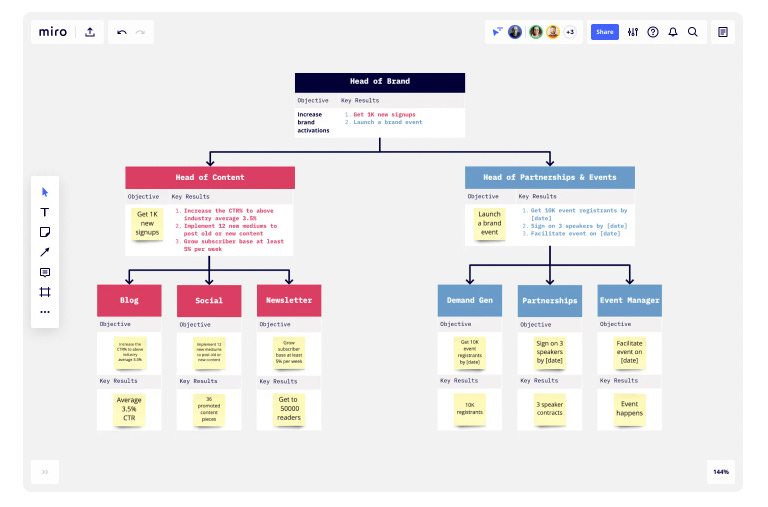Outcomes Thinking for Product Managers
A business outcome is a metric that moves the business forward, while a product outcome is a metric that helps us understand if the product is moving the business forward.
Hello Product People, This week’s newsletter is brought to you by Console: The Weekly Open Source Newsletter
Join thousands of engineers in subscribing to a weekly roundup of the latest in open-source software, curated by an Amazon engineer.
Outcomes Thinking
Outcome Thinkers build products that turn businesses around, double revenue, half costs, delight people, save people, connect people, or any other outcome one might dream up. They discover and deliver these things, in part, simply because they make outcomes the bedrock of their thinking and decision-making.
What are outcomes
Product Outcomes Measure Human Behavior
Outcome :
Outcomes are the change you want to make through your services or activities
An outcome is the result of internal and external company actions. Many times, an organization desires certain business outcomes, meaning they are objectives that the company wishes to fulfill. For example, a business may seek to increase its customer retention, improve profits or shareholder value.
To create effective desired business outcomes, you must define the goal using measurable figures, determine the time frame and consider how the outcome affects both your organization and your client. Depending on the outcomes you establish, you may need to implement various strategies for reaching them. Assessing which processes within your organization most affect your business outcomes is how you can employ strategies for meeting your goals.
Why is it important to understand outcomes?
Outcomes are valuable for businesses because they help create deliverables to meet their objective. Other benefits of understanding your project outcomes include:
Determining if you met your business objectives
Learning lessons for future projects and identifying areas for improvement
Providing an overall purpose for your product experiments
Discovering ways for meeting the needs of your business & users
Helping make sure all parts of the project serve the end goal
Benefits of determining desired outcomes
When determining your desired business outcomes, you define the goals you and your team are striving to meet. These are some benefits of establishing desired business outcomes:
Provide direction: By understanding the business outcomes you're working for, you can make decisions with those outcomes in mind. This provides direction to management and simplifies business choices.
Prioritize tasks: In every business, there are some tasks that you prioritize over others. Determining your desired business outcomes allows you to emphasize the importance of tasks that align with those outcomes.
Create timeframes: Business outcomes are time-based, which allows you to create a timeframe by which to meet them. For example, a company may want to improve its customer retention rate by 5% by the end of the quarter.
Increase productivity: When your teams know what they are trying to improve and why it allows them to understand their work and may increase productivity. Defining your desired business outcomes allows management to encourage teams to meet them.
Examples of business outcomes include:
Grow revenue
Grow profit
Grow margin
Grow market share
Reduce operating costs
Reduce churn/increase retention
How to measure outcomes
Follow these steps when measuring your outcomes:
Define the outcome you want to achieve consider what kind of impact you want your organization's actions to have. To do this, review your company's mission and the type of clients you currently serve. Also, consider what types of new clients you want to attract and how you want to make a difference with your product or services. Create a list of your desired outcomes to help guide you in future projects. When setting your outcome goal, make sure it's SMART: specific, measurable, attainable, relevant, and time-based.
Design quantifiable measures in order to measure the success of your project outcomes, design quantifiable measures that represent success in reaching your goals. For instance, if your project outcome is to reach more clients, consider setting a goal of increasing your client growth by a set percentage rate. Also, begin your project outcome statement with an action verb to describe what you plan to accomplish.
Access the relationship between your project outcomes and outputs review the outcomes of your project to see if you achieved them through your work or the project outputs. Sometimes a project output is successful but doesn't accomplish your outcome. Review to see if the change you were hoping for happened. Consider using a logic model when measuring your outcomes to get a visual representation of your project to see if you reached your expected result.
Track your progress since project outcomes tend to have a broader impact, they may take a while before you see effects. Choose a method for tracking your progress. For instance, if you are trying to determine how many participants learn more from an educational workshop, consider giving a questionnaire to participants before and after the event so you can see how much they learned.
Review your outcomes once your project is complete, review your outcomes to determine what effect it had on your client. You can do this by taking data measurements and comparing them to your initial outcome goals at the start of the project. Based on your evaluation, you can make adjustments for future projects to create outputs with stronger effects on the outcome.
Where do outcomes come from?
If you are a product manager or product leader one of the ways outcomes reach you is by-product strategy. Product strategy is made up of a lot of different moving parts that make up the overall direction of your product. You start with a solid product vision that includes your market plan and opportunity, customer and industry analysis, and product positioning. Then, you craft some product goals everyone can get behind.
Your product outcomes, whether they’re business outcomes, team outcomes, or operational outcomes, can’t leave room for doubt or misinterpretation. They should be a set of clear and specific objectives with measurable and achievable expectations.
Product managers use different methods to specify, measure and deliver outcomes. Some PMs use different methods at the same time, depending on the needs the team has. Systems like MBO (Management By Objectives), KPIs (Key Performance Indicators), SMART goals (Specific, Measurable, Achievable/action-oriented), and North Star metrics work well depending on the types of goals.
There’s one methodology that works well across all types of product goals: the OKR method. OKRs (Objectives and Key Results) give you and your team a measurable success strategy. After all, having a great product strategy means nothing if you don’t define exactly how you’ll carry it out.
What is an OKR?
OKRs are Objectives and their related Key Results. An OKR (Objectives & Key Results) helps businesses focus on solving their most important organizational problems. As a framework, OKRs help leadership teams discuss how the work of single individuals connects back to the overall business strategy. OKRs should be transparent to everyone: top-down, bottom-up, and cross-functional. When everyone’s looking at the same framework, everyone has the opportunity to work toward the same outcomes.
Objectives are the antidote to “blue sky thinking” – they aim to help you articulate what you want to achieve. An objective is significant, concrete, and drives you to get things done.
Key results explain how you’ll get those things done. Specific and measurable, these quantitative goals act as benchmarks for how you’ll reach an objective. (Think outcomes or results in real numbers.)
When to use an OKR
You and your team can use OKRs to:
Clarify major goals according to department or discipline
Communicate clearly and focus on what’s important for cross-functionality
Practice transparency and simplify big ideas, so everyone understands how they contribute to bigger company goals and priorities
Sets up indicators for measuring progress, so that teams can adapt and adjust to change
Focus efforts, so everyone stays aligned and cross-collaborative and turns competitive initiatives into combined and consolidated efforts
Teams that commit to completing OKRs should ideally point their stakeholders to results based on funding allocated per quarter. The goal is to reduce risk, yet still set ambitious, bold quarterly goals, and focus on results over outcomes while putting value for both customer and business front and center.
Benefits of Objectives and Key Results (OKRs)
The OKR approach offers many strategic advantages, so we will discuss just a few of the more important ones.
OKRs align individual team members’ tasks around a shared strategic goal. When created and communicated the right way, OKRs help gives cross-functional teams clear shared objectives to aim for. This can help everyone stay focused and continuously review their own tasks to make sure they align with larger objectives.
Objectives and key results can boost employee engagement. Lack of team enthusiasm on a project can slow productivity and prevent team members from doing their best work. This often happens when employees don’t understand the purpose of their tasks. A set of shared OKRs can help everyone understand how their day-to-day to-do items support the key results the company has set for itself.
OKRs foster team collaboration and chemistry. Because they involve high-level, strategic objectives requiring the contributions of several departments, OKRs can help create a greater sense of teamwork and support across the company.
Objectives and key results can make cross-functional teams more agile. Many people describe OKRs as an agile framework, which makes sense. If a company sets multiyear objectives, it will likely spend more time going down the wrong path before realizing the need to course-correct. But by setting short-term objectives and measuring the outcomes each quarter, a company can more quickly adjust priorities and reallocate resources if needed.






